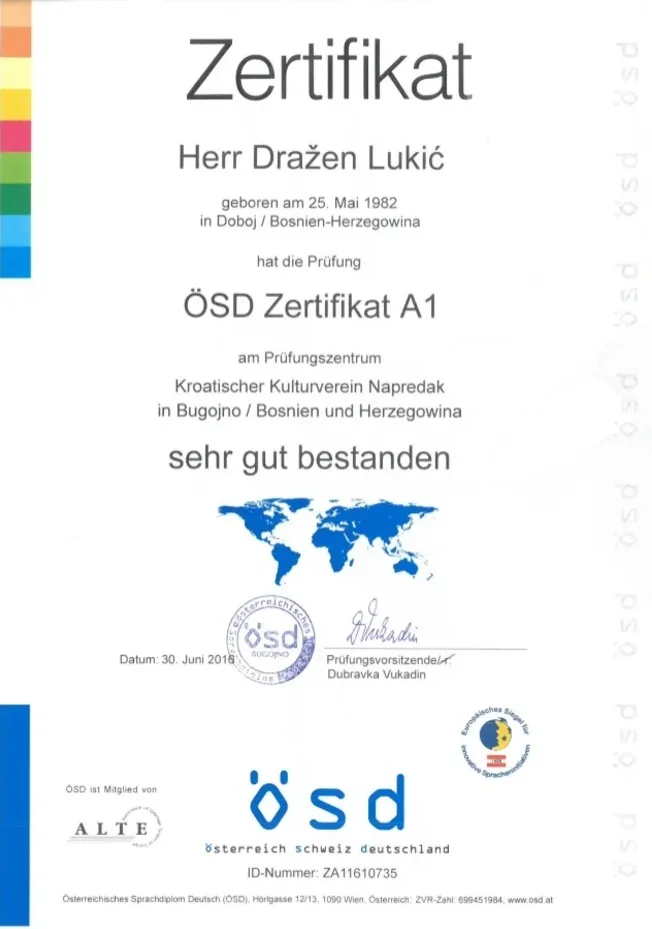Comprehending the ÖSD Certificate: Your Gateway to German Proficiency
In an increasingly globalized world, proficiency in multiple languages is an important property. For those interested in the German language, the ÖSD (Österreichisches Sprachdiplom) certificate sticks out as an acknowledged qualification. This post looks into what the ÖSD certificate is, its significance, the structure of the exams, preparation pointers, and answers to often asked concerns.
What is the ÖSD Certificate?
The ÖSD certificate is an official language certificate provided by the Österreichisches Sprachdiplom Deutsch, or the Austrian Language Diploma in German. It assesses the language efficiency of non-native speakers and follows the Common European Framework of Reference for Languages (CEFR). The ÖSD accredits language abilities ranging from A1 (newbie) to C2 (proficient), covering 4 key proficiencies: reading, composing, listening, and speaking.
Significance of the ÖSD Certificate
Acquiring an ÖSD certificate holds significance for different reasons:
Educational Opportunities: Many universities and universities in German-speaking countries need evidence of German language proficiency for admission. The ÖSD certificate serves as valid evidence of a prospect's language skills.
Work Prospects: In a competitive task market, an acknowledged language certificate can improve a prospect's employability, especially in roles requiring German as a primary language.
Migration Requirements: Some immigration procedures in German-speaking nations necessitate language proficiency certificates. The ÖSD is widely accepted by numerous authorities, making it a vital asset for those relocating to Austria or Germany.
Structured Learning: Preparing for the ÖSD certificate encourages learners to establish a well-rounded understanding of the language, aiding in both scholastic and daily communication.
Structure of the ÖSD Exam
The ÖSD certificate incorporates various levels of assessment, lining up with the CEFR. The examination structure includes the following components:
Levels Offered:
A1: Beginner
A2: Elementary
B1: Intermediate
B2: Upper Intermediate
C1: Advanced
C2: Proficient
Parts of the Exam:
The ÖSD exams are created to assess the following language skills:
Listening Comprehension: Candidates listen to audio excerpts and answer concerns to demonstrate understanding.
Reading Comprehension: This involves reading passages and reacting to concerns to show interpretation and comprehension.
Composing: Test-takers engage in written tasks, such as making up letters or essays, to display their ability to articulate ideas on paper.
Speaking: In this area, prospects take part in dialogues or monologues, showcasing their spoken communication abilities.
Exam Format:
Tests can take various formats, including:
Paper-based: Traditional assessments undertaken in person at designated screening centers.
Computer-based: Digital evaluations offered in some areas, using flexibility and convenience.
Getting ready for the ÖSD Exam

Preparation for the ÖSD certificate needs a structured approach. Here are some efficient techniques:
Establishing a Study Plan:
Examine Your Level: Determine your current proficiency level through practice tests.
Set Goals: Establish clear, attainable objectives for each language ability (listening, reading, composing, speaking).
Daily Practice: Allocate time each day for language study and practice various abilities to develop a thorough command of German.
Resources for Study:
Language Courses: Consider registering in language courses, either in-person or online, particularly developed for ÖSD preparation.
Books and Workbooks: Utilize materials that line up with the CEFR levels and cover all four proficiencies.
Online Platforms: Websites, apps, and forums supply interactive exercises and community assistance.
Sample Exams: Familiarize yourself with the test format by practicing with sample questions and previous tests.
Engaging with German:
Immerse Yourself: Surround yourself with the language through music, films, and podcasts.
Language Exchange: Partner with native speakers or classmates to practice conversational abilities.
Join Study Groups: Collaborating with peers can promote a helpful learning environment and boost motivation.
Often Asked Questions (FAQs).
1. For how long does the ÖSD certificate stay legitimate?
The ÖSD certificate does not have an expiration date, however candidates are recommended to update their abilities occasionally, especially for expert or scholastic purposes.
2. Where can I take the ÖSD exam?
The ÖSD examinations are administered at various certified assessment centers worldwide. A list of locations can normally be discovered on the official ÖSD website.
3. How much does the ÖSD exam expense?
Exam charges vary by area and level. It is recommended to inspect with regional testing centers for precise rates.
4. Can I retake the ÖSD exam if I do not pass?
Yes, prospects can retake the exam as many times as necessary to attain their preferred proficiency level.
5. Exist ösd a1 recommended for the ÖSD certificate?
While no main materials are mandated, it is beneficial to utilize books customized to language proficiency examinations and undertake practice tests.
Conclusion.
The ÖSD certificate acts as a credible benchmark of German language proficiency, opening doors to instructional, professional, and immigration chances. With a well-structured preparation method, devoted practice, and the best resources, aspiring candidates can improve their language skills and embark on a successful journey in mastering the German language. Whether for career development or individual enrichment, the ÖSD certificate represents a considerable action towards ending up being proficient in German.
